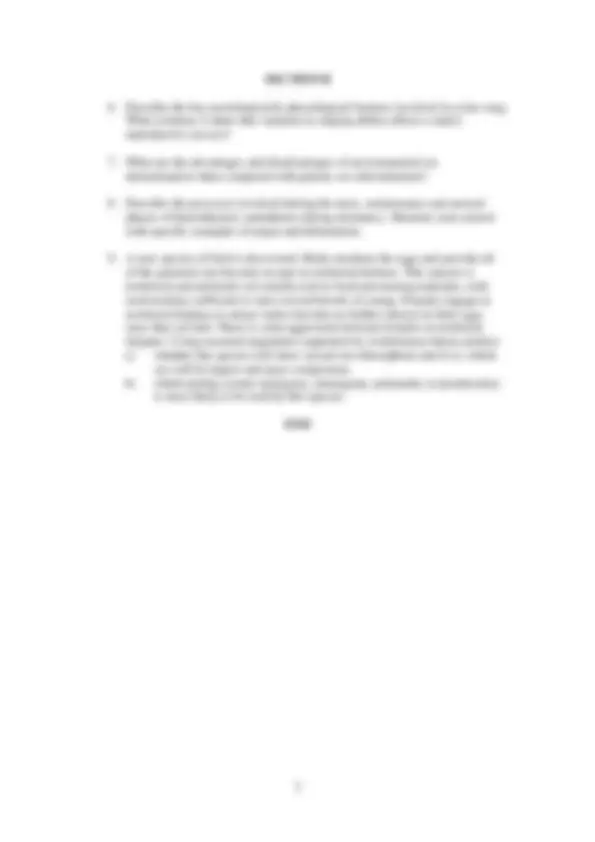



Study with the several resources on Docsity

Earn points by helping other students or get them with a premium plan


Prepare for your exams
Study with the several resources on Docsity

Earn points to download
Earn points by helping other students or get them with a premium plan
Community
Ask the community for help and clear up your study doubts
Discover the best universities in your country according to Docsity users
Free resources
Download our free guides on studying techniques, anxiety management strategies, and thesis advice from Docsity tutors
An exam from the advanced vertebrate zoology module, bs23820, at prifysgol aberystwyth university, held in semester 2 of 2009. The exam consists of questions from two sections, a and b, with two questions to be answered from each section. Topics covered include the origin of powered flight in birds, comparisons of breathing mechanisms, adaptations of the axial skeleton, placentation in metatheria and eutheria, sensory and neurological pathways, avian song and reproductive success, environmental vs. Genetic sex determination, and torpor and hibernation in heterothermic endotherms.
Typology: Exams
1 / 2

This page cannot be seen from the preview
Don't miss anything!


Time allowed – 3 hours
Answer TWO questions from SECTION A and TWO questions from SECTION B. The questions carry equal marks.
Turn over
END